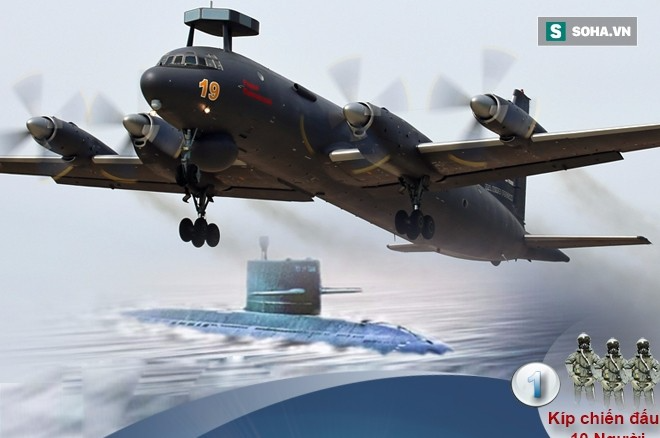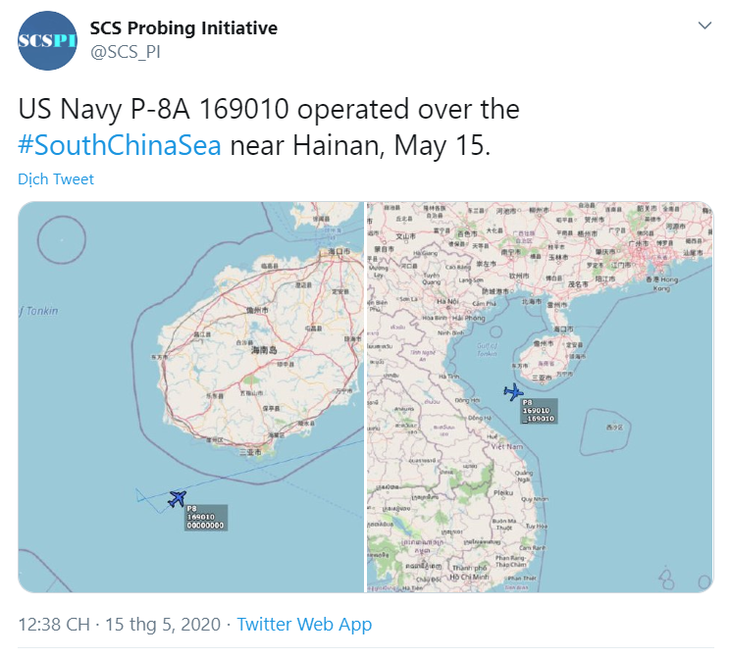On the afternoon of May 15th, the Twitter account @KimagureGolf9 posted simulated flight path images of the US Navy’s P-8A aircraft with registration number 169010.

The initial simulated images depicted the P-8A flying close to the southern part of China’s Hainan Island. The flight appeared to have taken place on the morning of May 15th and was refueled in the air by a US KC-135 aircraft.
About 5 minutes after the first image, the @KimagureGolf9 account presented another flight path of the P-8A near Hainan Island, showing it flying very close to the Tam Á city and the Yulin Naval Base – China’s largest submarine base, located southwest of Hainan Island.

The flight simulation also indicated that the US anti-submarine aircraft may have approached Yulin Naval Base at least twice: once when flying towards the Gulf of Tonkin and the second time when flying back out.

A military observer noted that this was not the first time US aircraft had appeared in the area. However, unlike previous occasions, the active transmission of identification signals by the P-8A suggested that the US military was sending a message to China.
Last year, US Pacific Air Forces Commander General Charles Q. Brown Jr. revealed to Tuoi Tre Online that the US frequently deploys bombers, surveillance aircraft like the P-3/P-8, U-2, and even unmanned RQ-4 aircraft to the South China Sea but often keeps it low-profile with the media, so few people are aware of it.
The image of the P-8A Poseidon with registration number 169010 was believed to have conducted a reconnaissance flight near Hainan Island on May 15th. The aircraft’s belly has been upgraded and equipped with the advanced AN/APS-154 sensor (highlighted in red) capable of detecting moving targets on land and underwater while providing sharp resolution images even in adverse weather conditions – Screenshot
@SCS_PI (Twitter account of the North Beijing Ocean Research Institute) later also posted images of the US anti-submarine aircraft’s flight path.
By the afternoon of May 15th, a Twitter account named @JapanRader claimed to have accurately tracked the flight path of the P-8A.

The US anti-submarine aircraft twice approached China’s largest submarine base – Photo 3. Twitter account of the North Beijing Ocean Research Institute reports the incident – Screenshot
The images released by this account showed that on the way out to the South China Sea, the US anti-submarine aircraft even flew into the Hainan sky and along the northeastern coast of the island.
Around 1:15 PM, @JapanRader stated that the US aircraft had moved away from Hainan Island and was flying over the South China Sea, heading northeast. This account also provided specific details such as aircraft speed, altitude, position based on longitude and latitude,… to prove it.
The US anti-submarine aircraft twice approached China’s largest submarine base – Photo 4. Flight paths in and out of the P-8A on May 15th as announced by @JapanRader – Screenshot
Both the US and China have yet to comment on the information. In the past, US reconnaissance aircraft have operated near Hainan Island and encountered Chinese fighter jets.
If confirmed, this incident will be placed within the context of the tense relations between Washington and Beijing across various fields, from initial handling of the COVID-19 pandemic, trade issues, intellectual property ownership, human rights, to the South China Sea.
